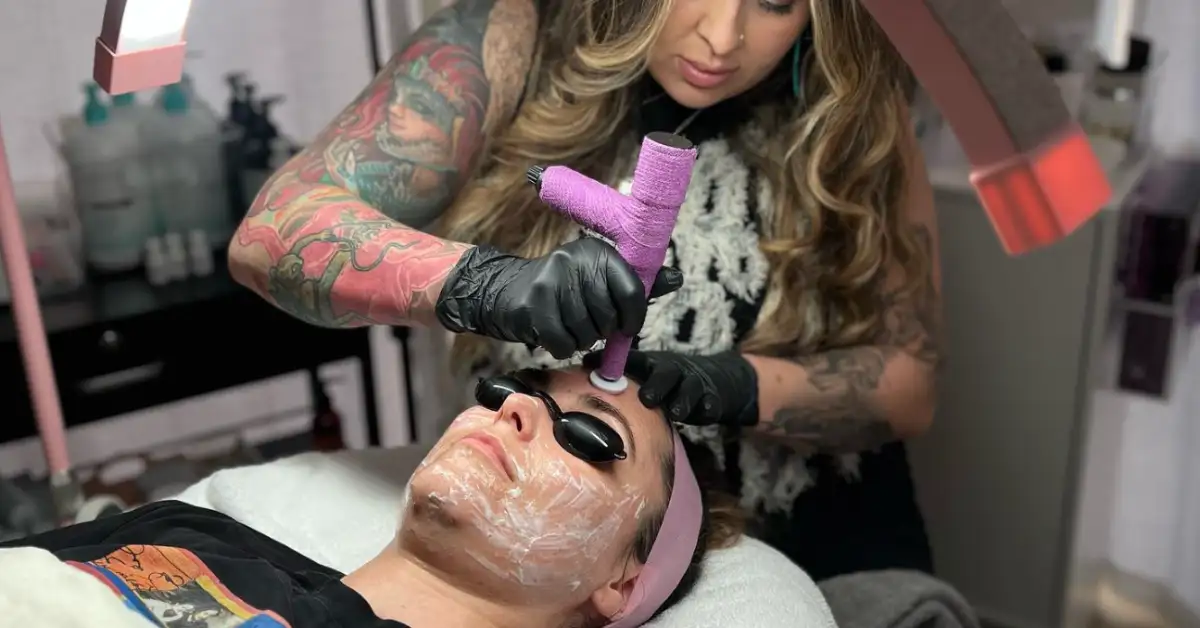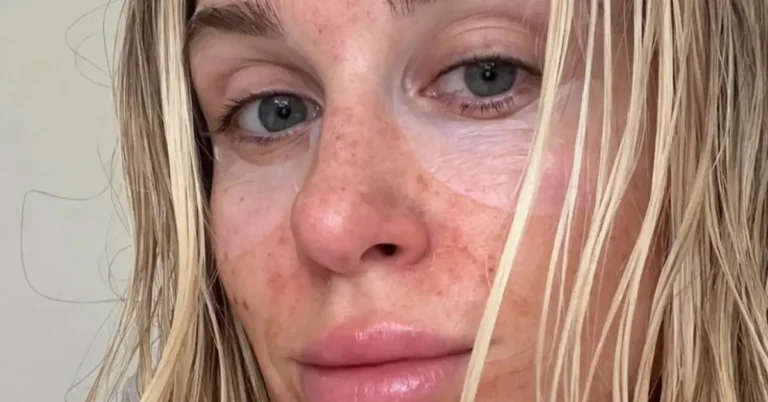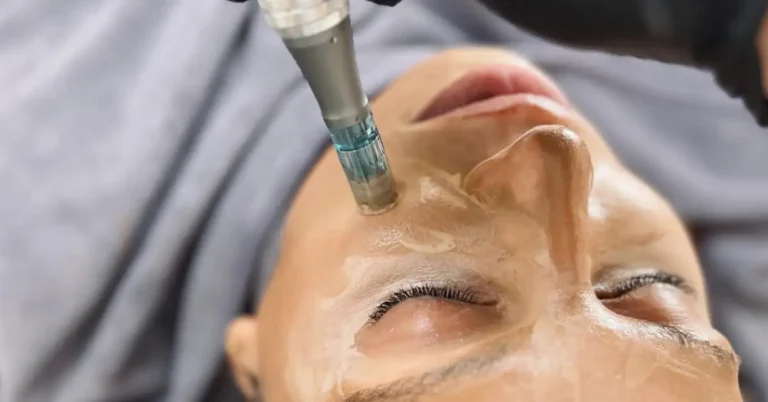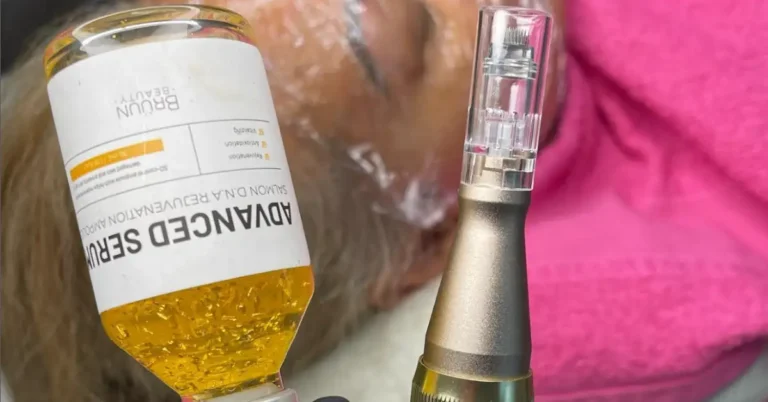Do you want to attain youthful and glowing skin? The realm of skincare is vast and can be overwhelming when trying to navigate through the numerous treatment alternatives offered. However, it’s crucial to be informed about two significant methods: Microchanneling and Microneedling.
Picture this: a fresher, more youthful you, with skin that exudes radiance and vibrancy. Microneedling and microchanneling, both designed to stimulate collagen production and enhance your skin’s overall appearance, offer this transformation. But here’s the kicker – they’re not created equal.
In this guide, we’ll delve into the world of Microchanneling vs. Microneedling, unlocking the secrets to achieving the complexion you desire. Say goodbye to confusion and hello to the rejuvenated skin you deserve. Get ready to make an informed choice that will leave you glowing.
Table of Contents
Microchanneling Vs Microneedling
Microchanneling and microneedling are both non-invasive treatments that can help improve a variety of skin concerns, such as fine lines, wrinkles, acne scars, and sun damage. While both treatments use tiny needles to create microchannels in the skin, the devices used in each procedure differ. Microchanneling uses a handheld wand with a series of tiny pyramid-shaped needles, while microneedling uses a roller or pen-like device with multiple needles.
One of the main differences between the two treatments is the level of invasiveness. Microchanneling is considered less invasive than microneedling, as it creates smaller punctures in the skin.
Additionally, microchanneling is typically less painful and requires less downtime than microneedling. However, microneedling may be more effective for treating deeper wrinkles and scars. Ultimately, the best treatment for you will depend on your individual skincare needs and goals.
What is Microchanneling?
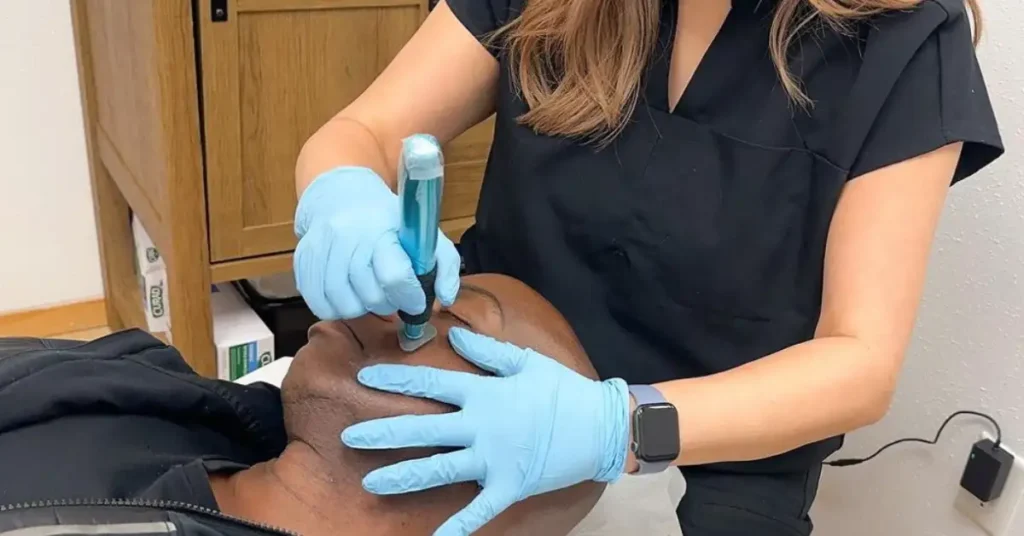
As a skincare treatment, microchanneling is a non-invasive technique that uses a wand-like device with a silicone microchip to create tiny channels in the skin. These channels are smaller than the ones created by microneedling, which means that the risk of skin tearing is lower. The channels stimulate the production of collagen and elastin, which are essential for healthy, youthful-looking skin.
Microchanneling is an excellent treatment for people who are looking to improve the appearance of fine lines, wrinkles, acne scars, and hyperpigmentation. The treatment can also help to reduce the size of pores, improve skin texture and tone, and enhance the overall appearance of the skin.
One of the significant benefits of microchanneling is that it has zero downtime. Unlike more invasive treatments, such as chemical peels or laser resurfacing, microchanneling does not require any recovery time. You can resume your normal activities immediately after the treatment.
Another benefit of microchanneling is that it can be customized to your specific skin concerns. The silicone microchip used in the treatment is loaded with a serum that contains active ingredients that target your specific skin issues. This means that the treatment can be tailored to your individual needs, resulting in better outcomes.
What is Microneedling?
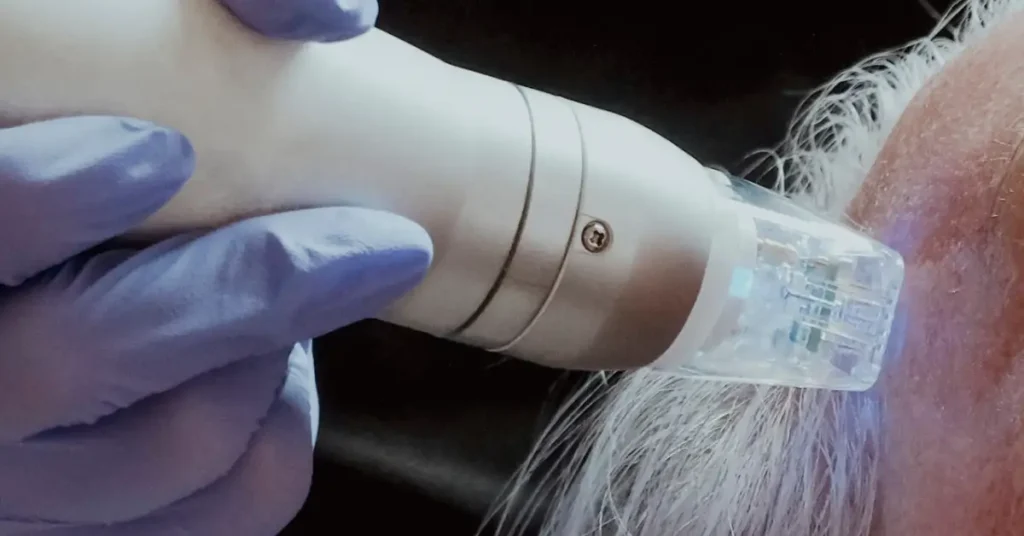
I have always been interested in skincare, and one of the most popular treatments in recent years is microneedling. Microneedling is a minimally invasive skin rejuvenation treatment that uses tiny needles to create controlled micro-injuries in the skin. These micro-injuries stimulate the body’s natural healing process, which leads to the production of collagen and elastin, two proteins that keep our skin looking young and healthy.
During a microneedling treatment, a device called a dermaroller or a dermapen is used to create tiny punctures in the skin. The punctures are so small that they are not visible to the naked eye, but they are enough to trigger the body’s natural healing response. The treatment is usually performed on the face, but it can also be used on other parts of the body, such as the neck, chest, and hands.
Microneedling has become popular because it is a safe and effective way to improve the appearance of fine lines, wrinkles, scars, and hyperpigmentation. It can also help to improve the texture and tone of the skin. The treatment is minimally invasive, which means that there is little to no downtime, and it is suitable for all skin types.
One of the benefits of microneedling is that it can be combined with other skincare treatments, such as chemical peels and serums. The tiny punctures created by the needles allow these products to penetrate deeper into the skin, where they can be more effective.
However, it is important to note that not all skincare products are suitable for use after microneedling, and it is essential to consult with a skincare professional before using any new products.
Microchanneling vs Microneedling: The Procedure
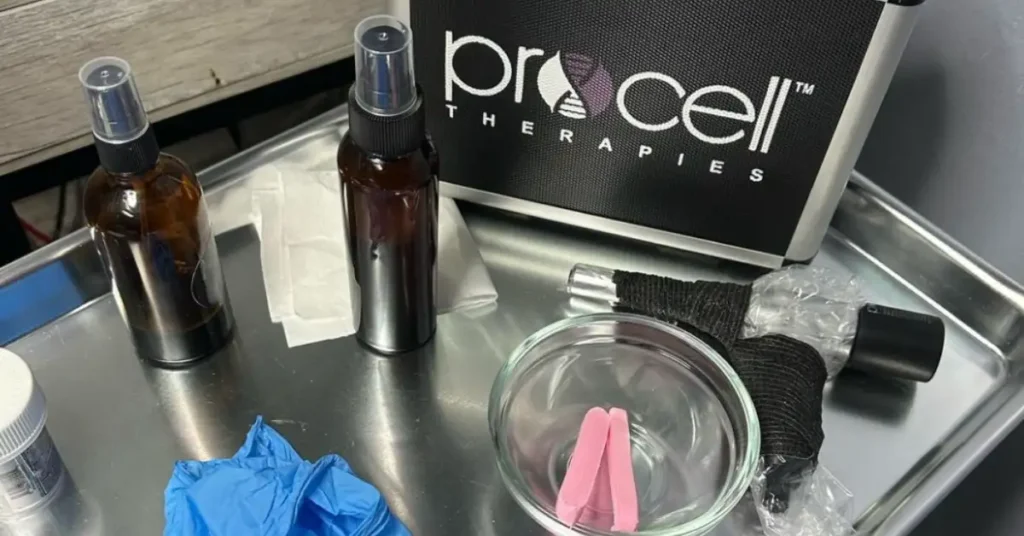
When it comes to skin rejuvenation treatments, microchanneling and microneedling are two of the most popular options available. Both treatments involve the use of tiny needles to create controlled micro-injuries in the skin, which stimulate the body’s natural healing response and promote the production of collagen and elastin. However, there are some key differences between the two procedures.
Microchanneling, also known as collagen induction therapy, involves the use of a pen-like device that creates tiny channels in the skin. These channels are filled with a customized serum that contains active ingredients like hyaluronic acid, growth factors, and antioxidants. The serum is absorbed deep into the skin, where it can work its magic and improve the overall health and appearance of the skin.
Microneedling, on the other hand, uses a roller or stamp-like device with multiple needles to create small punctures in the skin. These punctures trigger the body’s natural healing response, which leads to the production of new collagen and elastin. Microneedling is often used to treat a wide range of skin concerns, including fine lines, wrinkles, acne scars, and hyperpigmentation.
In terms of the actual procedure, microchanneling and microneedling are quite similar. Both treatments typically take around 30-60 minutes to complete, depending on the size of the treatment area. Before the procedure begins, a topical numbing cream is applied to the skin to minimize any discomfort.
During the treatment, the device is moved over the skin in a specific pattern, creating tiny punctures or channels. After the treatment is complete, a soothing serum is applied to the skin to help calm any redness or irritation.
Benefits of Microchanneling
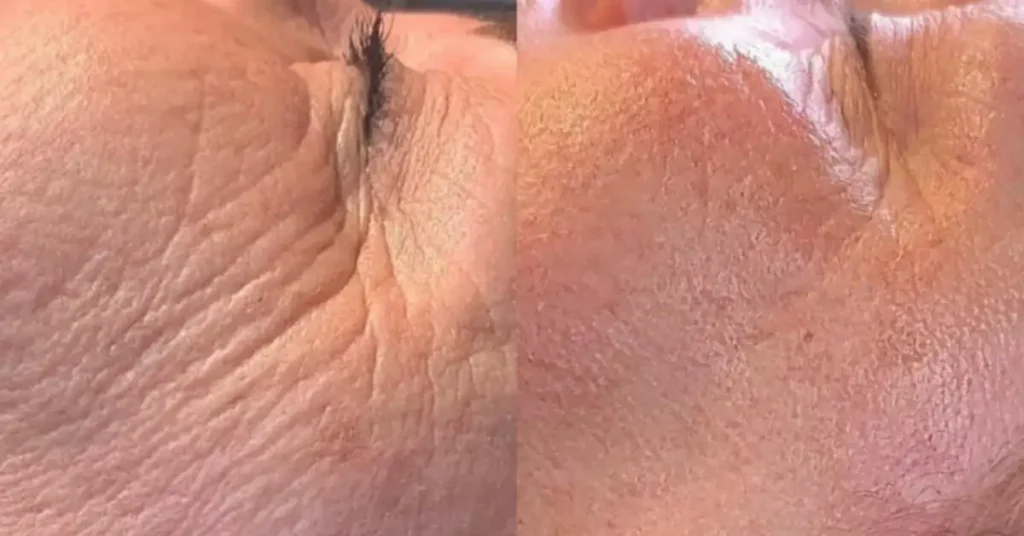
Microchanneling is a non-invasive skin rejuvenation treatment that can improve various skin concerns such as dry skin, acne scars, stretch marks, sun spots, and visible pores. As someone who has struggled with acne scars and fine lines, I have personally experienced the benefits of microchanneling.
One of the main advantages of microchanneling is that it is virtually pain-free. Unlike microneedling, which can be uncomfortable and cause bleeding, microchanneling uses a device with tiny needles that create superficial punctures in the skin. This means that there is no downtime and you can return to your daily activities immediately after the treatment.
Another benefit of microchanneling is that it can improve the appearance of fine lines and wrinkles. The controlled punctures created by the device stimulate the production of collagen and elastin, which are essential for skin elasticity and firmness. This can result in smoother, more youthful-looking skin.
Microchanneling also has anti-inflammatory effects, which can reduce redness and swelling associated with acne scars and other skin imperfections. In fact, a study published in the Journal of Cosmetic Dermatology found that microchanneling can significantly improve the appearance of acne scars after just one treatment.
Pro Tip: To enhance the benefits of microchanneling, I recommend using a serum or moisturizer with hyaluronic acid or vitamin C after the treatment. This can help to hydrate and brighten the skin, and boost collagen production.
Benefits of Microneedling
If you’re looking for a non-invasive way to improve the appearance of your skin, microneedling might be the perfect solution for you. As someone who has struggled with acne scars and fine lines, I can attest to the effectiveness of this treatment. Here are some of the benefits of microneedling:
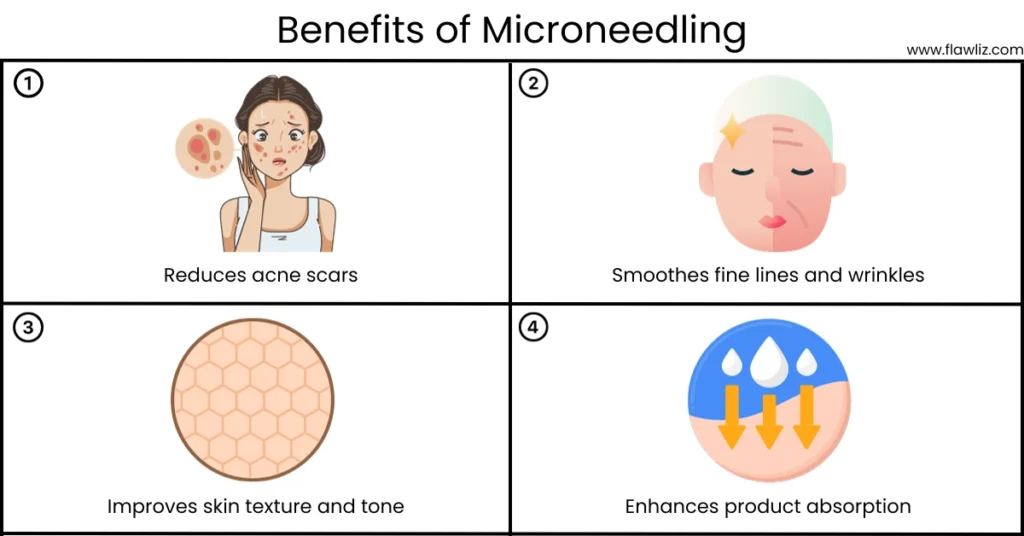
- Reduces acne scars: Acne scars can be a frustrating and embarrassing skin concern. Microneedling can help reduce the appearance of acne scars by stimulating collagen production and promoting skin cell turnover. Plus, the treatment is safe for all skin types.
- Smoothes fine lines and wrinkles: As we age, our skin loses collagen and elasticity, leading to fine lines and wrinkles. Microneedling can help stimulate collagen production, which can improve the appearance of fine lines and wrinkles.
- Improves skin texture and tone: Microneedling can also improve the overall texture and tone of your skin. By promoting collagen production and skin cell turnover, the treatment can help reduce the appearance of uneven skin tone and texture.
- Enhances product absorption: One of the unique benefits of microneedling is that it can enhance the absorption of skincare products. The tiny punctures created by the treatment allow for better penetration of active ingredients, making your skincare routine more effective.
Remember: To get the most out of your microneedling treatment, be sure to use a high-quality serum or moisturizer after the procedure. This will help soothe and hydrate your skin, while also enhancing the results of the treatment.
Potential Side Effects: Microchanneling
As with any cosmetic procedure, there are potential side effects associated with microchanneling. However, the risks are generally low, and most side effects are mild and temporary. Here are a few things to keep in mind if you’re considering microchanneling:

- Redness and swelling: After the procedure, you may experience some redness and swelling in the treated area. This is a normal reaction and should subside within a few hours.
- Bruising: In some cases, microchanneling can cause bruising. This is more likely to occur if you have sensitive skin or if you’re taking blood-thinning medication. If you do experience bruising, it should go away within a few days.
- Infection: While rare, there is a small risk of infection with any skin-penetrating procedure. To minimize this risk, make sure you choose a reputable provider who follows strict sanitation protocols.
- Pain and discomfort: Microchanneling can be mildly uncomfortable, but most people find the procedure tolerable. If you’re concerned about pain, talk to your provider about using a numbing cream beforehand.
- Skin irritation: Some people may experience skin irritation after microchanneling, especially if they have sensitive skin. If you’re prone to irritation, make sure to follow your provider’s aftercare instructions carefully.
My Advice: To minimize your risk of side effects, make sure you choose a qualified provider who uses sterile, high-quality equipment. Additionally, be sure to follow all pre- and post-procedure instructions carefully to ensure optimal results and minimize your risk of complications.
Potential Side Effects: Microneedling
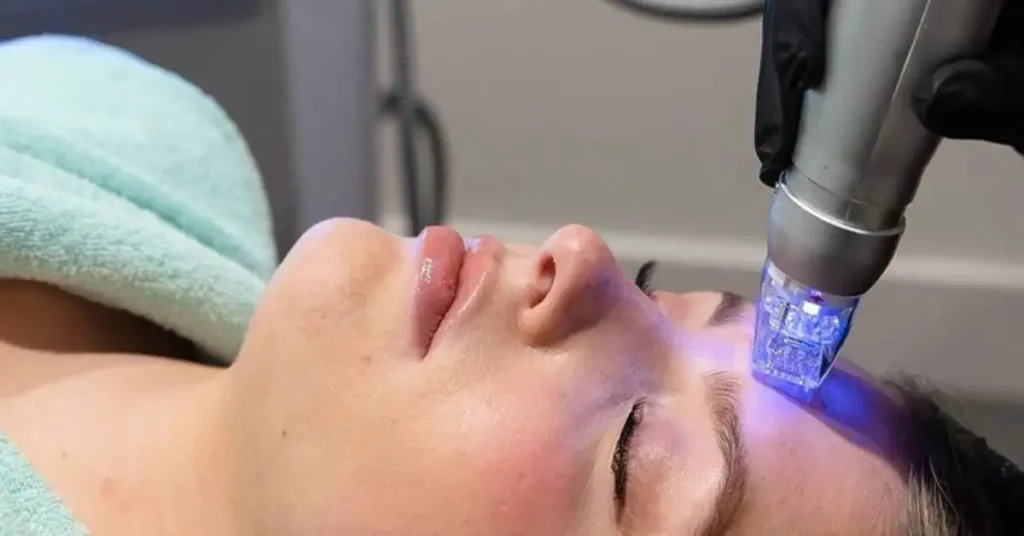
As with any cosmetic procedure, there are potential side effects to microneedling. While it is generally considered safe, it is important to be aware of possible risks and complications.
One of the most common side effects of microneedling is skin irritation, which can include redness, swelling, and itching. This is a normal reaction and usually subsides within a few hours to a few days. However, in rare cases, this irritation can persist or even worsen, leading to infection or scarring.
Another potential side effect is hyperpigmentation, which is the darkening of the skin due to increased melanin production. This can occur if the treatment is too aggressive or if the patient has a history of hyperpigmentation. To minimize the risk of hyperpigmentation, it is important to choose a qualified and experienced provider and to follow post-treatment instructions carefully.
In addition, microneedling can cause temporary dryness or flakiness of the skin. This can be managed with moisturizers and gentle exfoliation. It is also important to avoid sun exposure and to use sunscreen after treatment, as the skin may be more sensitive to UV rays.
Overall, the benefits of microneedling outweigh the potential risks for most patients. However, it is important to discuss any concerns or questions with a qualified provider before undergoing treatment.
Pro Tip: To minimize the risk of side effects, choose a provider who is experienced and qualified in microneedling. Ask to see before and after photos and read reviews from previous patients.
Who Should Choose Microchanneling?

As someone who has tried both microchanneling and microneedling, I can confidently say that microchanneling is the better choice for those with sensitive skin. Microchanneling uses smaller needles and creates smaller channels in the skin, making it less invasive and less likely to cause irritation or redness.
If you have fine lines, wrinkles, or acne scars that you want to improve, microchanneling can be an effective treatment. It stimulates collagen production and can help to reduce the appearance of these imperfections. It’s also a great option for those who want to improve the overall texture and tone of their skin.
One pro tip I have for those considering microchanneling is to make sure you choose a reputable provider that uses high-quality products. This will ensure that you get the best results possible and minimize the risk of any adverse reactions.
It’s worth noting that microchanneling may not be the best option for those with deep scars or severe wrinkles. In these cases, microneedling may be a more effective treatment. However, for most people, microchanneling is a safe and effective way to improve the appearance of their skin.
Who Should Choose Microneedling?
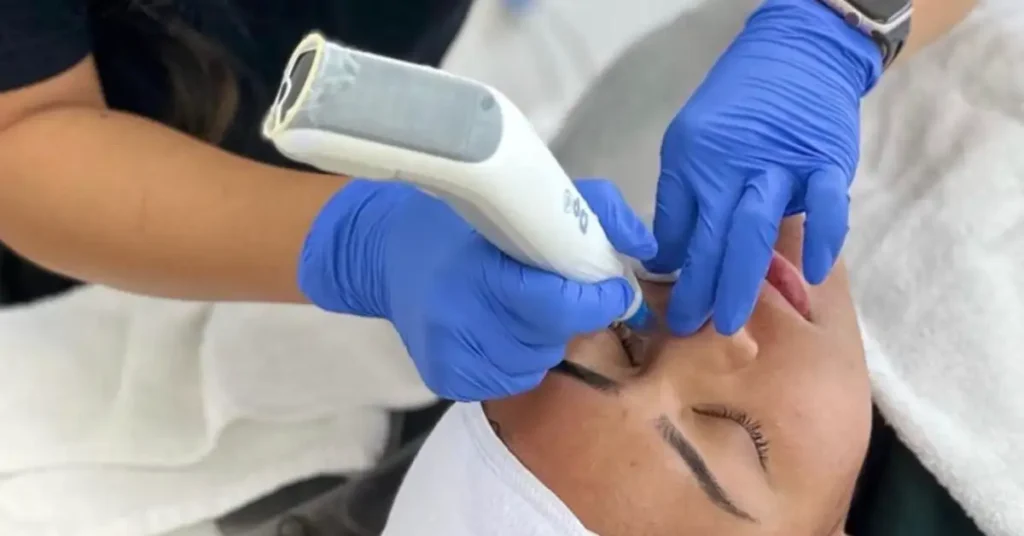
If you’re looking for a minimally invasive skin rejuvenation treatment that can help reduce the appearance of fine lines, wrinkles, and scars, then microneedling might be the right choice for you. I’ve personally had microneedling done several times, and I’ve found it to be an effective way to improve the overall texture and tone of my skin.
One of the main benefits of microneedling is that it can be used on all skin types. Whether you have dry, oily, or combination skin, microneedling can help stimulate collagen production and improve the overall health of your skin. It’s also a great option if you’re looking for a treatment that has minimal downtime. After a microneedling session, your skin may be slightly red or swollen, but this typically goes away within a few hours to a day.
If you’re someone who is prone to scarring or has acne-prone skin, microneedling can be a great option to help reduce the appearance of scars and improve the overall texture of your skin. It can also be used to help reduce the appearance of stretch marks.
If you’re interested in microneedling, it’s important to find a licensed and experienced professional to perform the treatment. Look for someone who has a good reputation and can provide you with before and after photos of their previous clients.
If you’re still unsure if microneedling is the right choice for you, it’s always a good idea to consult with a dermatologist or skincare professional. They can help you determine if microneedling is the right choice for your skin type and any specific concerns you may have.
Microchanneling vs Microneedling: Cost Comparison
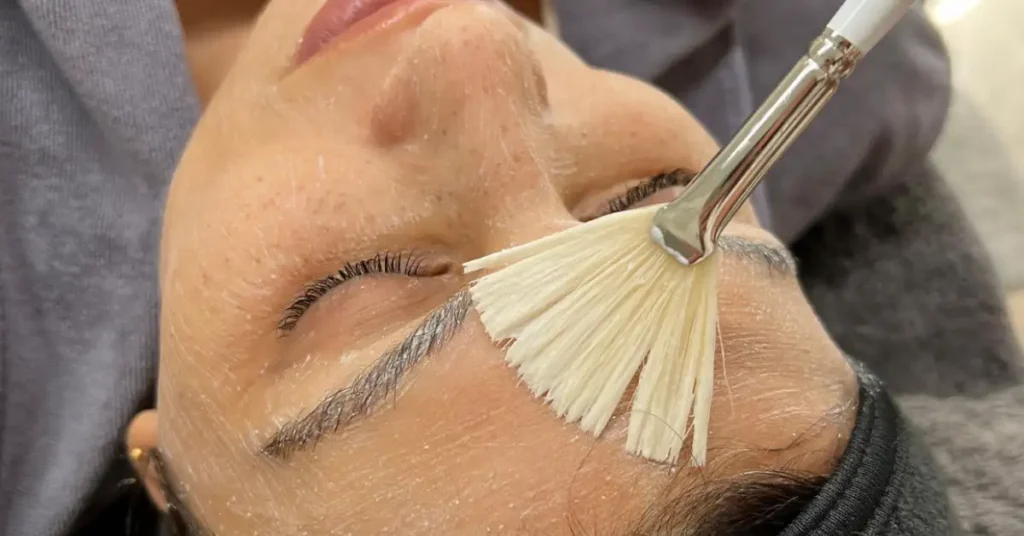
When it comes to skin rejuvenation treatments, both microchanneling and microneedling are popular choices. However, one factor that can greatly influence the decision of which treatment to choose is the cost. In this section, I will compare the cost of microchanneling and microneedling to help you make an informed decision.
Firstly, let’s take a look at the average cost of each treatment. Microchanneling is generally more expensive than microneedling, with prices ranging from $300 to $700 per session. On the other hand, microneedling typically costs between $100 and $300 per session.
It’s important to note that the cost of each treatment can vary depending on a number of factors, such as the location of the clinic, the experience of the practitioner, and the number of sessions required to achieve the desired results.
In terms of the frequency of treatments, microchanneling requires fewer sessions than microneedling. While microneedling typically requires three to six sessions to achieve optimal results, microchanneling can achieve the same results in just one or two sessions. This means that while microchanneling is more expensive per session, it may end up being more cost-effective in the long run.
In my personal experience, I have found that microchanneling is a more comfortable and less painful treatment compared to microneedling. Microchanneling uses a device with tiny needles that create microchannels in the skin, which allows for deeper penetration of the serum used during the treatment. This results in a more effective treatment with less discomfort.
Remember: Before deciding on a treatment, it’s important to do your research and find a reputable practitioner who has experience in both microchanneling and microneedling. Additionally, it’s a good idea to ask for before and after photos of previous clients to get an idea of the results you can expect.
Choosing Between Microchanneling and Microneedling
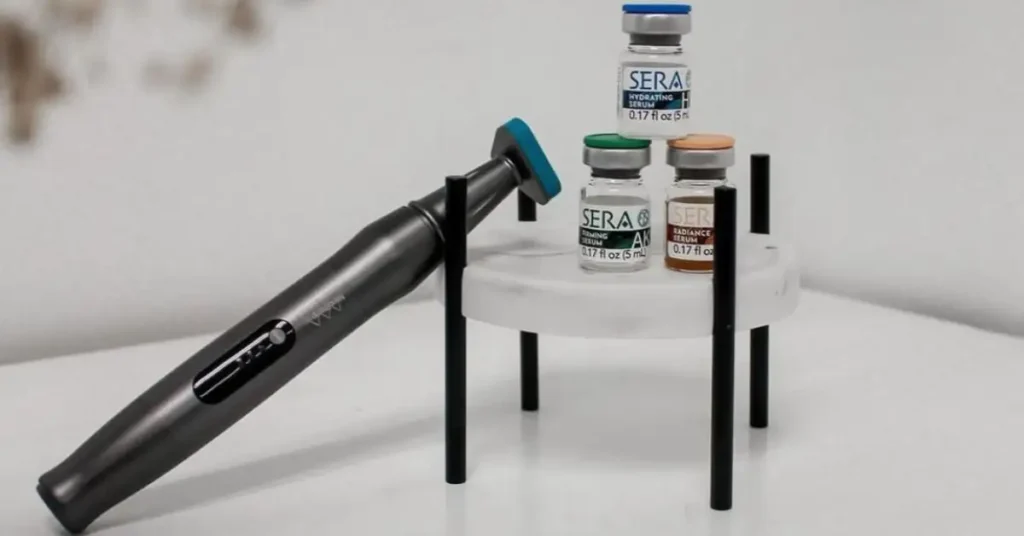
When it comes to skin rejuvenation, microchanneling and microneedling are two popular treatments that are often compared. Having personally experienced both treatments, I understand the confusion that comes with choosing between the two. In this section, I will outline the differences between microchanneling and microneedling to help you make an informed decision.
Depth of Needles
One of the main differences between these two treatments is the depth of the needles used. Microneedling involves using a device with needles that penetrate the skin to a depth of 0.5mm to 2.5mm, depending on the area being treated.
Microchanneling, on the other hand, uses needles that only penetrate the skin to a depth of 0.1mm to 0.2mm. This makes microchanneling less invasive and more suitable for individuals with sensitive skin.
Healing Time
Another difference between these two treatments is the healing time required. Since microneedling involves deeper needle penetration, it can result in more downtime. Patients may experience redness, swelling, and peeling for up to a week after the treatment. Microchanneling, on the other hand, has a shorter healing time, with most patients experiencing little to no downtime.
Treatment Areas
Both microchanneling and microneedling can be used on various areas of the body, including the face, neck, and hands. However, microneedling is often recommended for treating larger areas, such as the thighs or abdomen, while microchanneling is better suited for smaller areas, such as around the eyes or lips.
Results
Both treatments are effective in promoting collagen production, reducing fine lines, and improving skin texture. However, microchanneling may be a better option for individuals with darker skin tones, as it is less likely to cause hyperpigmentation.
Microchanneling vs Microneedling: A Recap
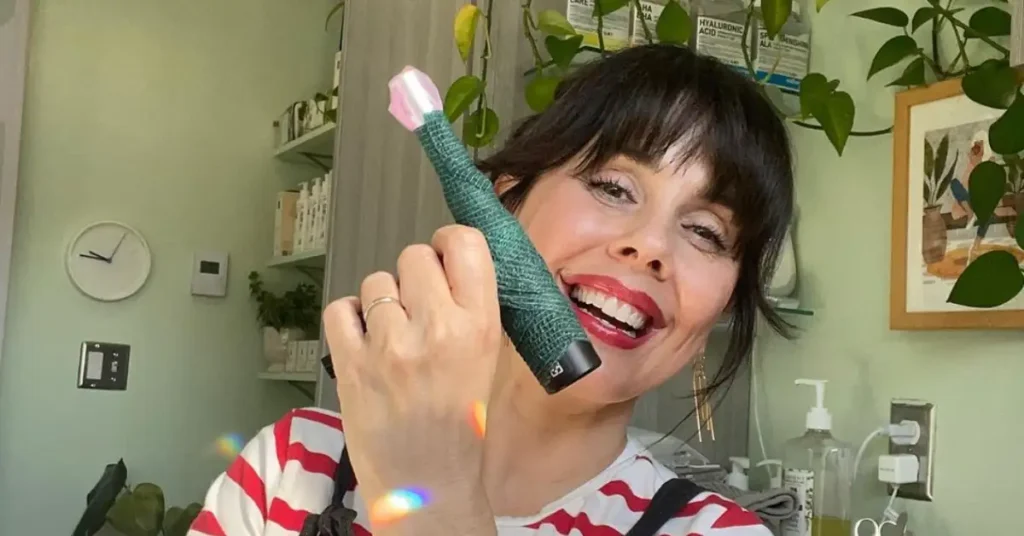
As someone who has tried both microchanneling and microneedling, I can say that both treatments have their benefits. However, there are some key differences between the two that are worth noting.
Microchanneling uses a device with tiny needles that create microchannels in the skin, allowing for deeper penetration of serums and other skincare products. Microneedling, on the other hand, uses a roller device with needles that puncture the skin to stimulate collagen production.
One of the biggest differences between microchanneling and microneedling is the level of discomfort. I found that microchanneling was less painful than microneedling, which can be quite uncomfortable. Additionally, because microchanneling creates microchannels instead of punctures, there is less risk of scarring or other adverse effects.
In terms of results, both treatments can improve the appearance of fine lines, wrinkles, and other signs of aging. However, microchanneling may be more effective for targeting specific skin concerns, such as hyperpigmentation or acne scars.
To help summarize the differences between microchanneling and microneedling, I’ve created a table comparing the two treatments:
| Microchanneling | Microneedling |
|---|---|
| Uses a device with tiny needles to create microchannels in the skin | Uses a roller device with needles to puncture the skin |
| Allows for deeper penetration of skincare products | Stimulates collagen production |
| Less painful than microneedling | Can be uncomfortable |
| Less risk of scarring or adverse effects | Higher risk of scarring or adverse effects |
| Effective for targeting specific skin concerns | Effective for improving overall skin texture and appearance |
FAQ
What is better microneedling or Microchanneling?
Microchanneling is often preferred for its less abrasive and minimally invasive approach compared to microneedling. Many patients find it to be a painless procedure, and the micro-channels created can lead to less redness and inflammation in the skin.
Why choose microneedling?
Microneedling is chosen for its ability to stimulate collagen production, improve skin texture, and reduce signs of aging, acne scars, and stretch marks. It’s a minimally invasive procedure with little downtime, making it a popular choice for skin rejuvenation.
Does Microchanneling reduce pore size?
Microchanneling can help reduce pore size by stimulating collagen production and improving overall skin texture. Over time, this can lead to tighter and more refined pores, resulting in a smoother complexion.
How many Microchanneling sessions does it take to see results?
Typically, you can start seeing results from microchanneling after just one session, but a series of sessions, usually around 3 to 6 treatments spaced several weeks apart, may be recommended for optimal and long-lasting results. Individual responses may vary. Consult with a skincare professional for personalized guidance.
What is negative about microneedling?
Some potential drawbacks of microneedling include temporary redness, swelling, and peeling post-treatment. It may not be suitable for individuals with certain skin conditions or infections. Inexperienced or improperly trained practitioners can lead to complications.
If you liked this blog article about the topic: Microchanneling Vs Microneedling, don’t forget to leave us a comment down below to tell us about your experience.

